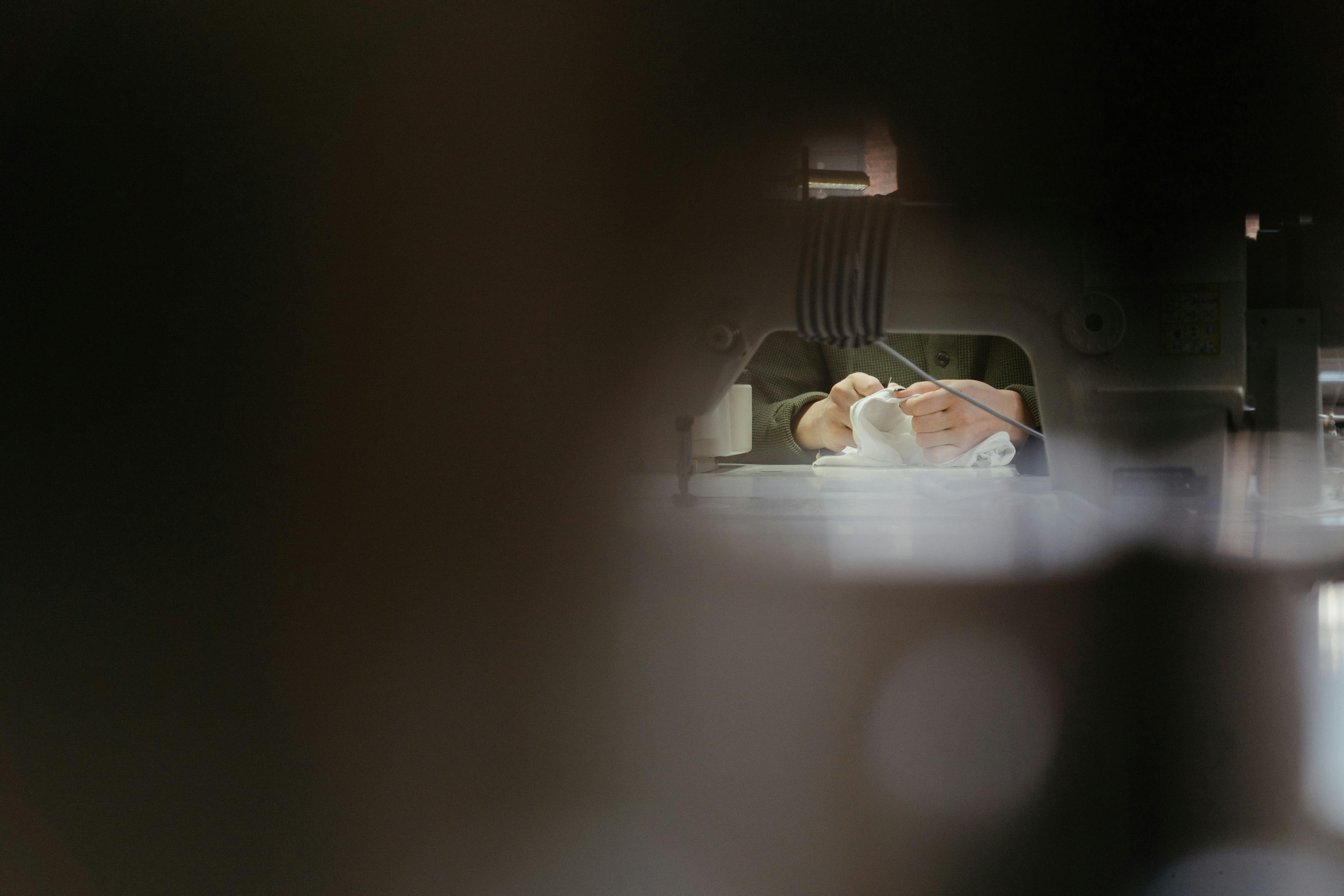Apply Now
Effective Techniques to Deglaze a Pan for Enhanced Flavor
Deglazing a pan is a vital culinary technique that can transform your cooking, elevating simple sautéed dishes to gourmet levels. Understanding how to deglaze effectively allows cooks to extract complex flavors from the fond—those caramelized bits left stuck to the bottom of the pan after sautéing meats, vegetables, or other ingredients. Not only does deglazing improve the flavor profile of sauces, but it also introduces depth and richness that can’t be achieved through other methods. In this article, we'll explore the essential steps for how to deglaze a pan, including tips on different liquids such as wine, broth, and vinegar.
The benefits of mastering deglazing are numerous. Beyond creating flavorful sauces, this technique can also aid in pan cleaning and enhance the overall presentation of your dishes. If you’re looking to elevate your cooking skills and impress your family or guests, stepping up your deglazing game is a must. Here’s a quick roadmap of what you can expect in this article: we’ll cover essential deglazing techniques, explore the best liquids for deglazing, share practical tips, and even look at some recipe variations to enhance your meals. By the end, you'll be equipped with the knowledge to master deglazing and create delicious sauces that will leave everyone asking for seconds.
Understanding the Process: Steps for Deglazing
With a clear overview of deglazing and its benefits established, let’s dive into the fundamental steps involved in effectively deglazing a pan. This process involves taking the residue left in the pan, typically rich in flavors, and making it the base of your sauce.
Essential Deglazing Steps
To get started with your deglazing efforts, first ensure you have a suitable pan. It's recommended to use a stainless steel sauté pan or skillet for the best results; non-stick pans may not yield the desired fond. Once you've cooked your dish and removed the food, follow these key steps to deglaze:
1. **Choose Your Liquid**: Depending on your dish, you might reach for cooking wine, broth, or even vinegar. Each will impart a different flavor, so consider what will complement your main ingredients.
2. **Remove Excess Fat**: It's crucial to maintain the right amount of fat before deglazing. If there's too much, consider pouring off some, as too much oil can dilute the flavor of your sauce.
3. **Heat the Pan**: Return the pan to medium heat and add the deglazing liquid, allowing it to sizzle against the fond.
4. **Scrape the Fond**: With a wooden spoon or spatula, gently scrape the bottom of the pan to release the caramelized bits. This action is key to capturing all the rich flavors.
5. **Reduce the Liquid**: Allow the liquid to simmer and reduce in volume, which will concentrate the flavors and create a thicker sauce consistency.
Following these steps will yield a beautiful sauce ready to be drizzled over your dish, turning an ordinary meal into something extraordinary.
Tips for Achieving the Perfect Deglaze
To make deglazing effortless and effective, consider some of these pro tips to enhance your culinary skills:
- **Timing is Key**: Deglaze while the pan is still hot to maximize flavor extraction.
- **Use Leftover Drippings**: Don’t let those delicious juices go to waste; they can be key flavor elements in your sauce.
- **Control Your Heat**: Adjust your stovetop accordingly to avoid burning the fond while deglazing. Aim for a steady simmer to gently lift those bits from the pan.
- **Don’t Rush the Reduction**: Allow your liquid to simmer sufficiently; it's tempting to want a quick sauce, but slower reduction leads to deeper flavor.
By keeping these tips in mind, you’ll ensure that your deglazing process boosts the flavor of your dishes significantly.
Exploring Deglazing Liquids: Wine, Broth, and Vinegar
Next, let’s dive deeper into the various liquids you can use to deglaze effectively. Different liquids provide unique flavors that can enhance your dishes significantly.
Using Wine for Deglazing
Wine is a classic choice for deglazing, especially in French cooking. Its acidity can help cut through the richness of sautéed meats and can create a complex flavor profile in your pan sauces.
- **Types of Wine**: White wine is preferable for chicken or fish, while red wine works beautifully with beef or lamb.
- **How to Use**: Pour a splash of your chosen wine into the hot pan and scrape the fond. Don’t forget to let it reduce for a few minutes to concentrate the flavors before adding additional ingredients like cream or herbs.
Using Broth for Flavorful Sauces
For a more savory profile, broth is an excellent choice when deglazing. It provides a rich flavor base that is particularly effective in gravies and sauces served over meats.
- **Broth Options**: Chicken, beef, or vegetable broth all work well. Choose based on the protein you’ve cooked to maintain consistency in flavor.
- **Technique**: Similar to wine, add the broth to your hot pan, let it simmer, and scrape up every bit of fond for a delicious sauce.
Using Vinegar: A Tangy Alternative
If you are looking for a more tangy flavor in your sauces, vinegar can be an excellent choice for deglazing. Using vinegar can brighten up your dish and enhance the taste of your ingredients.
- **Types of Vinegar**: Balsamic, apple cider, or wine vinegars each bring different profiles, so choose according to your recipe’s needs.
- **Application**: Similar to other liquids, you’ll add the vinegar directly to the pan and scrape. Note that vinegar reduces quickly, so keep an eye on the consistency.
By experimenting with these deglazing liquids, you can easily add layers of flavor to your dishes, taking your home cooking to restaurant quality.
Sauté Techniques: Mastering the Art of Deglazing
Having a proper sauté technique is crucial to ensure successful deglazing. The way you cook your ingredients will directly affect the fond created, dictating how flavorful your deglazing liquid will be.
Choosing the Right Pan
The choice of pan plays a critical role in creating good fond. Stainless steel pans are ideal as they facilitate browning and fond formation, while non-stick pans typically do not create the same flavorful bits.
- **Why Stainless Steel?**: This type of pan allows for superior heat retention and promotes even cooking. Additionally, it helps with creating more pronounced fond that lifts beautifully when deglazing.
The Importance of Temperature Control
Maintaining the right cooking temperature is essential for proper sautéing and fond development.
- **Heat Management**: Start at medium-high heat to sear your proteins effectively while producing fond without burning.
- **Adjusting as Necessary**: Don’t be afraid to adjust the heat as you cook; this flexibility will lead to more flavorful outcomes.
Achieving the Right Cooking Time
Cooking your ingredients for the right amount of time will create a rich fond without overdoing it.
- **Visual Indicators**: Look for a deep golden color on your ingredients before moving to deglaze. This indicates that you’ve developed a flavor-packed fond.
- **Taste as You Go**: Regularly taste your food as it cooks to judge when it's the right time to deglaze.
By focusing on these sauté techniques, you’ll ensure that every time you deglaze, you’re maximizing flavors in your cooking.
Creative Ways to Use Deglazed Liquids
Understanding the essentials of deglazing opens up a world of possibilities for enhancing your cooking. Not only can you make delectable sauces, but there are also countless creative applications for your deglazed liquids.
Making Sauces from Deglazed Liquids
One of the primary uses for your deglazed liquid is in crafting sauces. A well-made sauce can elevate any dish, impressing guests with its complexity.
- **Creating a Base**: Begin with the deglazed liquid as a base and add aromatics, cream, or butter to achieve the desired consistency and richness.
- **Finishing Touches**: Consider herbs, spices, or a splash of cream for flavor enhancement. Always taste and adjust seasoning accordingly.
Incorporating into Soup Recipes
Leftover deglazed liquid can also be a fantastic addition to soups, lending them a deep, flavorful base.
- **Using as Broth**: Blend your deglazed sauce into your soups to combine layers of flavor that will leave a lasting impression.
- **Simmering with Vegetables**: Enhance your vegetable soups by starting with a deglazed liquid, creating a complex backdrop for the dish.
Enhancing Grain Dishes
Rice, quinoa, or couscous can greatly benefit from a splash of your deglazing liquid, bringing new flavors into these staple sides.
- **Cooking Grains**: Use the deglazed liquid instead of water or broth when cooking grains to introduce depth and savory notes.
- **Finishing Mains**: Stir in a tablespoon or two after cooking to add a finishing touch to the dish.
In these ways, utilizing your deglazed liquids can take your cooking from simple to stunning by layering flavors intelligently.
Q&A: Common Questions About Deglazing Techniques
As you explore the world of deglazing, you may have questions. Here are some frequently asked questions that will enhance your understanding and confidence in this essential cooking technique.
What is the purpose of deglazing a pan?
Deglazing serves to lift the fond—caramelized bits stuck to the bottom of the pan—creating a flavorful base for sauces and gravies. It enhances the overall taste of your dishes.
Can I deglaze with water?
Certainly! While water is less flavorful than broth or wine, it can effectively remove fond. Consider adding herbs or spices to boost flavor if you choose this option.
How do I know when my fond is ready to deglaze?
Watch for a golden-brown crust forming at the bottom of your pan—this indicates ample flavor has developed and it's the right time to deglaze.
Is deglazing safe for non-stick pans?
While it’s possible to deglaze with non-stick pans, the fond may not develop as effectively, and the texture might differ. It's best to use stainless steel for optimal results.
Can I store deglazed liquids for later use?
Yes! Deglazed liquids can be stored in airtight containers in the refrigerator for a few days or frozen for longer-term use. Just remember to label them for future reference.
Experimenting with deglazing will undoubtedly improve not only your culinary techniques but also the flavor of your meals. With practice and creativity, you can master the art of deglazing and create mouthwatering dishes that highlight the nuances of cooking.




